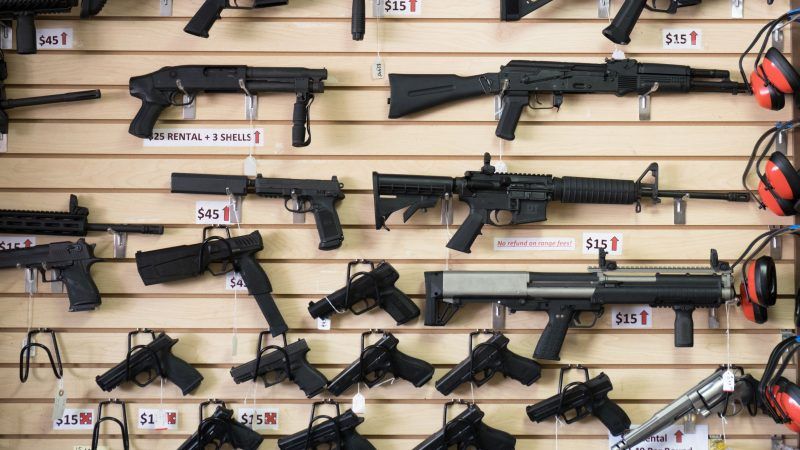Dick's Sporting Goods Destroys $5 Million Worth of Its Own 'Assault Weapons'
A decision based on a poor grasp of gun technology.

Dick's Sporting Goods thinks it has found a solution to gun violence: destroying the company's own inventory.
In an interview with CBS on October 6, CEO Edward Stack revealed that Dick's had destroyed $5 million worth of "assault-style weapons" following the company's 2018 decision to remove them from store shelves.
Stack's stance on the issue began to take form in 2012, when he decided to stop selling the popular AR-15 rifle after Adam Lanza used one to kill 27 people at Sandy Hook Elementary School in Newtown, Connecticut. Stack initially planned to remove the guns from store shelves quietly, but outcry from the National Rifle Association, firearm enthusiasts, and gun companies led Stack to publicly defend his decision, saying he didn't want "to sell…assault-style weapons that could inflict [the] kind of damage" seen at Sandy Hook.
After the 2018 shootings at Stoneman Douglas High School in Parkland, Florida, which left 17 people dead, Stack took his position a step further, announcing that Dick's would no longer sell firearms of any type to anyone under 21 and that it would pull all the remaining "assault weapons" from its stores. Two months later, the CEO announced his plan to physically destroy Dick's assault-weapon inventory. Stack claims these decisions were prompted by the fact that Nikolas Cruz, the Parkland shooter, had purchased a shotgun from Dick's prior to his arrest. "Even though it wasn't the gun he used. It could've been," Stack said. (Yet Dick's still sells shotguns.)
The backlash from the firearms industry was even bigger this time, with multiple gun companies, including O.F. Mossberg & Sons Inc., MKS Supply, and Springfield Armory, severing ties with the chain completely.
Destroying $5 million in gun inventory does not seem to be affecting Dick's bottom line. This past August, Dick's posted its best-earning quarter in three years.
It probably won't affect crime much either. A 2018 analysis by the Rand Corporation "found no qualifying studies showing that bans on the sale of assault weapons and high-capacity magazines decreased any of the eight outcomes we investigated," including mass shootings.
Those results shouldn't be surprising. When people say "assault weapon," they usually mean the guns banned by 1994's Public Safety and Recreational Firearms Use Protection Act, which expired in 2004. That law classified certain weapons as "assault weapons" for reasons as simple as being a specific brand, such as Kalashnikov, or bearing a combination of certain physical characteristics, such as folding stocks and threaded barrels. As Reason's Jacob Sullum has noted, these features have no impact on a weapon's lethality. The functional capabilities of an AR-15 and a standard hunting rifle are the same. Both are semiautomatic weapons, firing one bullet per pull of the trigger.
And yes, Dick's still stocks and sells semiautomatic rifles that aren't considered "assault weapons." Unsurprisingly, those are sometimes used in mass shootings. The Ruger 10/22, available at Dick's, was used in a massacre at Cascade Mall in Burlington, Washington, in 2016.
Stack acknowledged that the new policy won't stop mass shootings, saying: "You're probably right, it won't. But if we do these things and it saves one life, don't you think it's worth it?" It's unclear what life he thinks it saves to stop selling one arbitrarily defined group of weapons while continuing to offer mechanically identical products. Stack may need to brush up on how the guns he sells work.
Show Comments (70)